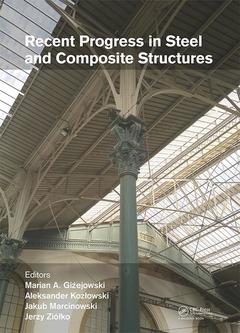Description
Recent Progress in Steel and Composite Structures
Proceedings of the XIII International Conference on Metal Structures (ICMS2016, Zielona Góra, Poland, 15-17 June 2016)
Coordinators: Gizejowski Marian A., Marcinowski Jakub, Kozlowski Aleksander, Ziółko Jerzy
Language: English
Subjects for Recent Progress in Steel and Composite Structures:
Keywords
Load Bearing Capacity; cylindrical; Cylindrical Shell; shells; Temporary Steel; corrugated; Flat Bars; sheeting; ECCS; bending; Polymer Damper; moment; Sandwich Panels; numerical; Concrete Confinement; model; Weathering Steels; axial; Corrosion Specimens; force; Main Girder; Uniform Torsion; Corrugated Sheets; Composite Steel Concrete Columns; Corrugated Webs; Corrosion Losses; Non-uniform Torsion; Corrosion Products; Ultimate Shear Capacity; Atmospheric Corrosion Tests; Gusset Plates; Bottom Flange; Polymer Element; Code En; Free Vibrations
· 17.4x24.6 cm · Hardback
Description
/li>Contents
/li>Readership
/li>Biography
/li>
Recent Progress in Steel and Composite Structures includes papers presented at the XIIIth International Conference on Metal Structures (ICMS 2016, Zielona Góra, Poland, 15-17 June 2016). The contributions focus on the progress made in theoretical, numerical and experimental research, with special attention given to new concepts and algorithmic procedures, and to background knowledge as well as the development and implementation of rules and recommendations for codification worldwide.
In addition to the five keynote papers the book contains 62 two-page extended abstracts of individual contributions delivered by 164 Authors and Co-authors from 13 countries of four continents. The CD containing all full-length papers is an attachment to the conference book.
Recent Progress in Steel and Composite Structures is a useful reference source to academics, researchers, graduate students and practicing engineers.




